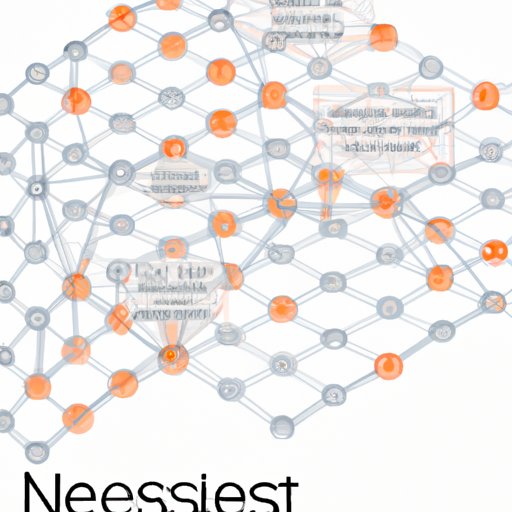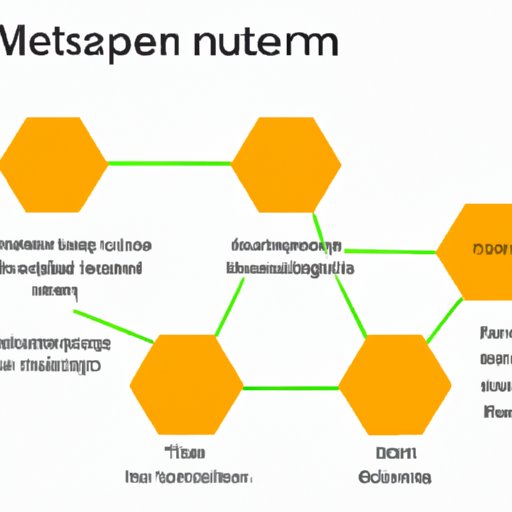Introduction
A mesh network is a type of local area network (LAN) that uses multiple devices to create a wireless network. It is often used in businesses, homes, and public places where there is a need for reliable and secure internet access, such as airports, shopping malls, and universities. In a mesh network, each device serves as an independent router, allowing data to be transmitted directly from one device to another without going through a central hub or server. This makes it ideal for large areas or difficult-to-reach locations.

Exploring the Benefits of Mesh Networks
Mesh networks offer a number of advantages over traditional LANs. Here are some of the key benefits of using a mesh network:
Increased Reliability
One of the main advantages of a mesh network is its increased reliability. Because each device is acting as an independent router, if one device fails, the others can take up the slack and keep the network running. This makes mesh networks more resilient to outages and other disruptions.
Lower Costs
Another benefit of mesh networks is their cost effectiveness. Because they don’t require a central server or hub, they can be set up with fewer components and less equipment. This makes them much more affordable than traditional LANs.
Greater Flexibility
Finally, mesh networks offer greater flexibility than traditional LANs. Because each device is acting as an independent router, they can be easily reconfigured or expanded as needed. This makes them ideal for businesses or homes that may need to add more devices or expand their network coverage.
How to Set Up a Mesh Network
Setting up a mesh network is relatively straightforward. The first step is to choose the right hardware. You’ll need a router and one or more mesh nodes, which are small devices that connect to the router and extend the range of the network. Once you’ve chosen your hardware, you’ll need to configure the network by connecting the devices to each other and configuring the settings.
Choosing the Right Hardware
When choosing the hardware for your mesh network, you’ll need to consider factors like your budget, the size of the area you need to cover, and the types of devices you’ll be connecting. Make sure to research different products and read reviews before making your decision.
Configuring the Network
Once you’ve chosen your hardware, you’ll need to configure the network. This involves connecting the devices to each other and setting up the network settings. Depending on the hardware you’re using, this may involve entering commands into the router or downloading an app to configure the settings.
Testing the Connection
Once you’ve finished setting up the network, it’s important to test the connection to make sure everything is working properly. You can do this by connecting a device to the network and checking to see if it can access the internet. If the connection is successful, then your mesh network is ready to use.
Understanding the Topology of Mesh Networks
The topology of a mesh network is what determines how the devices are connected. In a basic mesh network, each device is connected directly to every other device in the network. This allows data to be transmitted quickly and reliably between devices without having to go through a central hub or server.
Basic Structure
In a basic mesh network, each device is connected directly to every other device in the network. This allows data to be transmitted quickly and reliably between devices without having to go through a central hub or server. The devices can also act as routers, relaying data from one device to another until it reaches its destination.
Advantages of Mesh Networks
The advantages of a mesh network include increased reliability, lower costs, and greater flexibility. As the number of devices increases, the amount of data that can be transmitted increases, making it ideal for large areas or difficult-to-reach locations. Additionally, because each device is connected directly to every other device, if one device fails, the others can take up the slack and keep the network running.

The Different Types of Mesh Networks
There are several different types of mesh networks, each of which has its own advantages and disadvantages. Here are some of the most common types of mesh networks:
Infrastructure Mesh Networks
An infrastructure mesh network is the most common type of mesh network. In this type of network, each device is connected directly to every other device in the network, forming a self-organizing network. This type of network is ideal for businesses or homes that need reliable and secure internet access.
Mobile Mesh Networks
A mobile mesh network is a type of mesh network that uses mobile devices as nodes. This type of network is often used in disaster relief situations or military operations, as it is easy to deploy and can provide quick and reliable internet access in remote or difficult-to-reach locations.
Wireless Mesh Networks
A wireless mesh network is a type of mesh network that uses radio signals to transmit data between devices. This type of network is often used in large buildings or outdoor areas, as it provides greater coverage than a wired network. Wireless mesh networks can also be used to provide internet access in remote or rural areas.
Comparing Mesh Networking Technologies
When choosing a mesh networking technology, it’s important to compare the different options available. Here are some of the most common mesh networking technologies and how they compare:
Wi-Fi vs. Zigbee
Wi-Fi is the most common type of mesh networking technology. It is fast, reliable, and widely available. However, it is not as secure as other technologies, such as Zigbee. Zigbee is a low-power, low-cost mesh networking protocol that is ideal for applications that require high levels of security.
Bluetooth vs. Z-Wave
Bluetooth is a short-range wireless technology that is often used in consumer electronics. It is fast, reliable, and widely available. However, it is not as secure as other technologies, such as Z-Wave. Z-Wave is a low-power, low-cost mesh networking protocol that is ideal for home automation applications.
LoRaWAN vs. Sigfox
LoRaWAN is a long-range wireless technology that is often used in industrial applications. It is fast, reliable, and has a wide range. However, it is not as secure as other technologies, such as Sigfox. Sigfox is a low-power, low-cost mesh networking protocol that is ideal for applications that require high levels of security.

Analyzing the Security Implications of Mesh Networks
When setting up a mesh network, it’s important to consider the security implications. Here are some of the key security considerations when using a mesh network:
Secure Encryption Protocols
It’s important to use secure encryption protocols when setting up a mesh network. This will help protect data from being intercepted or compromised. Popular encryption protocols include WPA2, TLS, and SSH.
Network Access Control
It’s also important to implement network access control. This will help ensure only authorized users can access the network and prevent unauthorized users from gaining access. Popular access control methods include password authentication and two-factor authentication.
Endpoint Security
Finally, it’s important to use endpoint security measures. These measures will help protect the devices connected to the network from malware and other threats. Popular endpoint security measures include antivirus software, firewalls, and intrusion detection systems.
Conclusion
Mesh networks offer a number of advantages over traditional LANs, including increased reliability, lower costs, and greater flexibility. They are also easy to set up and can be used in a variety of applications. When setting up a mesh network, it’s important to consider the security implications and use secure encryption protocols, network access control, and endpoint security measures to protect the network and connected devices.
(Note: Is this article not meeting your expectations? Do you have knowledge or insights to share? Unlock new opportunities and expand your reach by joining our authors team. Click Registration to join us and share your expertise with our readers.)
